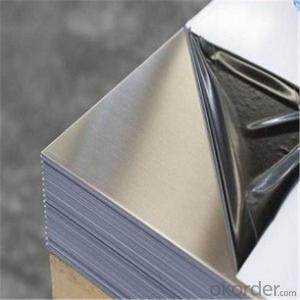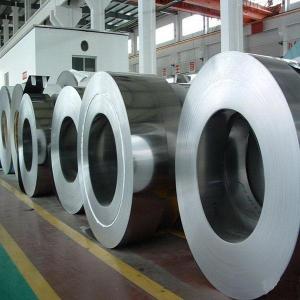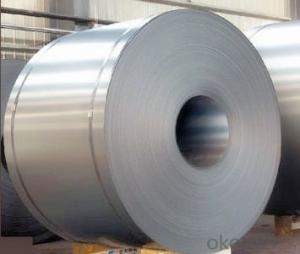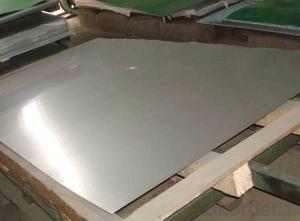Stainless Steel 4x8 Sheets
Stainless Steel 4x8 Sheets Related Searches
Best Paint For Stainless Steel Blanket Insulation For Steel Buildings Primer For Galvanized Steel Foam Filter For Stainless Steel H S Code For Stainless Steel Surface Grinding Wheels For Stainless Steel Surface Grinding Wheels For Hardened Steel Hole Saw For Stainless Steel Paint For Stainless Steel Stainless Steel For BbqHot Searches
Steel Mesh Panels For Sale Price For Stainless Steel Scrap Scrap Price For Stainless Steel Price For Stainless Steel Stainless Steel Tank For Sale Stainless Steel Sheets For Sale Cheap High Tea Sets For Sale Stainless Steel Tanks For Sale Stainless Steel For Sale High Density Fiberboard For Sale Solar Hot Water Collectors For Sale Scaffolding For Sale In Uae Scaffolding For Sale In Ireland Scaffolding For Sale In Houston Type Of Inverter For Solar Price Of Shipping Containers For Sale Types Of Inverter For Solar Stock Price For Aluminum Used Solar Inverter For Sale Steel Mesh Panels For SaleStainless Steel 4x8 Sheets Supplier & Manufacturer from China
Okorder.com is a professional Stainless Steel 4x8 Sheets supplier & manufacturer, offers integrated one-stop services including real-time quoting and online cargo tracking. We are funded by CNBM Group, a Fortune 500 enterprise and the largest Stainless Steel 4x8 Sheets firm in China.Hot Products
FAQ
- The bending limits of stainless steel sheets depend on several factors such as the grade of stainless steel, thickness of the sheet, and the specific type of bending process being used. Stainless steel sheets are known for their excellent strength and durability, which allows them to be bent to a certain extent without breaking or cracking. In general, stainless steel sheets can be bent to a radius that is at least twice the thickness of the sheet. For example, if the sheet is 1mm thick, it can typically be bent to a minimum radius of 2mm. However, it is important to note that this is just a general guideline and the actual bending limits may vary depending on the specific grade of stainless steel. Certain grades of stainless steel, such as 304 and 316, have higher yield strengths and are more resistant to deformation, making them suitable for more severe bending applications. Thicker sheets also have higher bending limits compared to thinner ones, as they have more material to withstand the bending forces. It is also worth mentioning that the type of bending process used can affect the bending limits of stainless steel sheets. Processes like press brake bending and roll bending are commonly used for bending stainless steel sheets. These processes utilize different techniques and equipment, which can result in varying bending limits. To determine the exact bending limits for a specific grade and thickness of stainless steel sheet, it is best to consult the manufacturer's specifications or seek guidance from a professional metal fabricator. They can provide accurate information and guidance on the bending capabilities of stainless steel sheets for your specific application.
- Indeed, oil refineries find stainless steel sheets to be a suitable option. This is due to stainless steel's commendable resistance to corrosion, ability to withstand high temperatures, and durability. These qualities render it highly compatible with the harsh conditions encountered in oil refineries, where the presence of corrosive chemicals, elevated temperatures, and constant exposure to moisture can prove detrimental to alternative materials. Commonly utilized within oil refineries, stainless steel sheets serve various purposes such as storage tanks, pipelines, heat exchangers, and other equipment that necessitate corrosion resistance. Furthermore, the ease of cleaning and maintenance of stainless steel sheets plays a pivotal role in preserving the efficiency and functionality of equipment within oil refineries.
- In various industries, stainless steel sheets are preferred over other materials like aluminum or carbon steel for several reasons. Firstly, stainless steel sheets possess excellent corrosion resistance, making them suitable for environments with moisture or corrosive elements. In comparison, aluminum, although corrosion-resistant, is not as durable as stainless steel in harsh conditions, and carbon steel is prone to rust. Secondly, stainless steel sheets are renowned for their strength and durability. They have a higher tensile strength than aluminum, making them more resistant to bending and deformation. Carbon steel shares similar strength characteristics but is more susceptible to corrosion, especially in exposed applications. Moreover, stainless steel sheets can withstand high temperatures without compromising their structural integrity. They exhibit excellent heat resistance properties, making them ideal for applications involving heat transfer or exposure to extreme temperatures. Conversely, aluminum has lower heat resistance, while carbon steel can lose strength and become brittle when subjected to high temperatures. Additionally, stainless steel sheets are non-porous and easy to clean, making them a popular choice in industries where hygiene is critical, such as food processing or medical equipment. In contrast, aluminum and carbon steel may have more porous surfaces that can harbor bacteria or contaminants. Furthermore, stainless steel sheets offer a sleek and modern appearance that is often desired in architectural and design applications. They can be easily polished or finished to achieve various decorative effects. While aluminum and carbon steel sheets are also versatile, they may not provide the same level of aesthetic appeal. However, it is important to note that stainless steel sheets may be more expensive than aluminum or carbon steel due to their superior properties. The choice of material ultimately depends on the specific requirements of the application, including factors such as cost, strength, corrosion resistance, and aesthetics.
- Yes, stainless steel sheets can be used for outdoor furniture. Stainless steel is a highly durable material that is resistant to rust, corrosion, and weathering. This makes it an ideal choice for outdoor furniture as it can withstand the elements and retain its appearance and structural integrity over time. Additionally, stainless steel has a sleek and modern look that can complement various outdoor design styles. Whether it's for tables, chairs, or other outdoor furniture pieces, stainless steel sheets can provide a long-lasting and visually appealing option for outdoor use.
- Some of the different types of stainless steel sheet finishes for automotive applications include brushed, polished, satin, mirror, and textured finishes. These finishes vary in terms of appearance, texture, and level of reflectivity, providing options for various aesthetic preferences and functional requirements in the automotive industry.
- The minimum thickness of stainless steel sheets offered may differ based on the manufacturer and the particular grade of stainless steel employed. Typically, the thinnest stainless steel sheets offered range from 0.4mm to 0.5mm. Nevertheless, it is worth mentioning that certain manufacturers might provide thinner sheets, like 0.3mm, although these may be more specialized or not as readily accessible. If you have a specific thickness requirement for your project, it is advisable to seek guidance from stainless steel suppliers or manufacturers to ascertain the available choices.
- Yes, stainless steel sheets can be cut to size using various cutting methods such as shearing, laser cutting, or waterjet cutting.
- Yes, stainless steel sheets are commonly used in food processing industries for various applications. Stainless steel is highly resistant to corrosion, making it ideal for use in environments where food is processed, stored, or handled. It is hygienic, easy to clean, and does not react with the food, ensuring that the quality and safety of the food are maintained. Stainless steel sheets are used for making food preparation surfaces, worktables, countertops, sinks, shelves, storage tanks, and equipment like mixers, conveyors, and ovens. Additionally, stainless steel sheets are durable and can withstand high temperatures, making them suitable for a wide range of food processing operations.















































